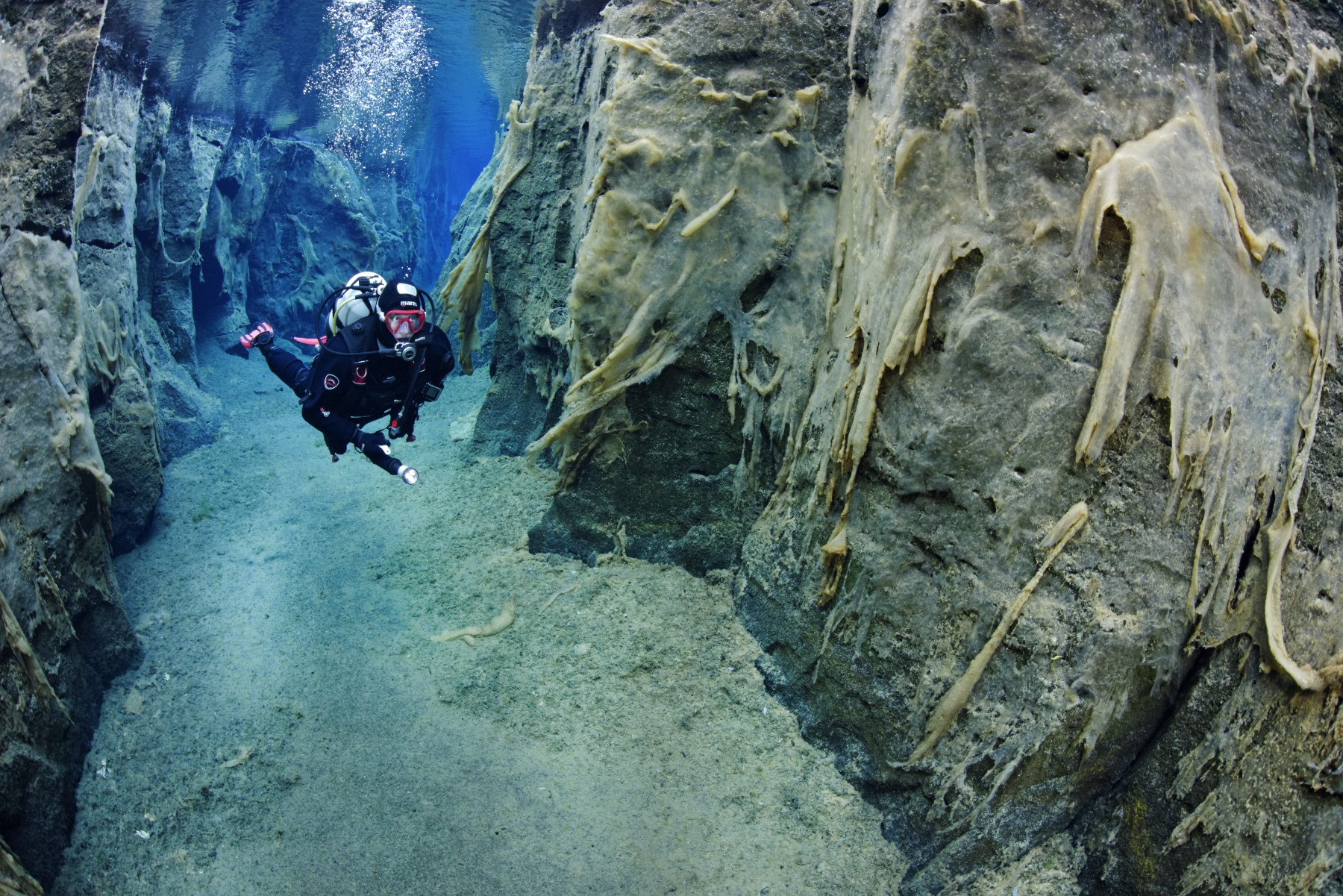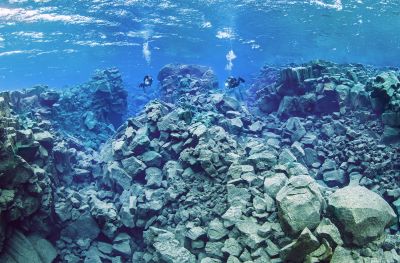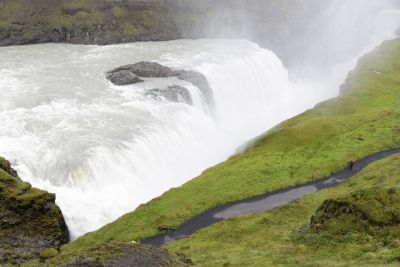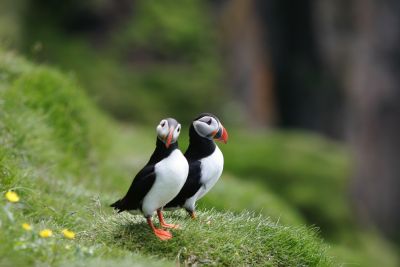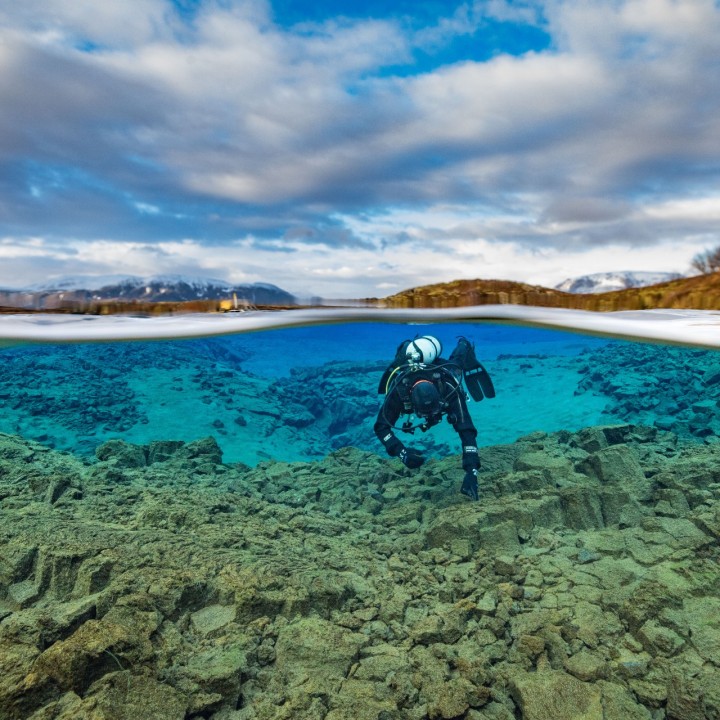The dive between the continents
The Silfra Rift Silfra has been rated a world top 5 dive site. You dive in the clearest water of the world (visibility 100m+) between the continents.
The hidden gem
Like Silfra, Davíðsgjá is a lava fissure in Lake Þingvallavatn, but the two fissures are very different from each other.
Iceland's must-see nature sights
Gullfoss waterfall and Geysir are two of the main sites on the popular Golden Circle route.
Home to Silfra fissure
Nestled within Iceland's rugged landscapes lies a place where history, geology, and breathtaking beauty converge. Learn about this UNESCO World Heritage Site which is also the home of Silfra fissure.
The North Atlantic is full of life
With its undersea gardens, forests, and deserts, Garður is one of our favourite ocean dive sites in the Reykjavík area.
Kelp forests and lots of wildlife
Local divers have frequented this dive spot for years and placed structures to attract wildlife such as starfish, crabs and urchins. Now you can see it too!
Ocean dive site close to Silfra
Akranes has all the North Atlantic has to offer. Visit the kelp forests and all its inhabitants, fish, crabs and other wildlife. Only about an hour from Silfra.
The fresh and salty fissure
Bjarnagjá is a lava fissure on the Reykjanes peninsula. The freshwater of the Bjarnagjá is mixed in with the sea water entering from the end of the fissure.
A Dazzling geothermal river
"Little River" is located near the northern coast but is always a warm temperature. As it is a shallow river, we snorkel instead of dive.
The Silfra of the north
Nesgjá is another lovely fresh water fissure with the crystal clear water that is so unique to Iceland. Nesgjá is quite shallow but amazingly beautiful.
The geothermal chimney
Strýtan is the only place known to man where recreational divers can reach geothermal chimneys.
An iconic route in Northern Iceland
Home to the dive sites Litlaá lagoon and Nesgjá fissure. It is a must-visit for travelers seeking awe-inspiring landscapes, dramatic waterfalls, volcanic marvels, and the enchanting beauty of the Arctic.
Underwater & Underground
At Lake Kleifarvatn we dive directly into bubbling underwater hot springs. The landscape around the lake is similarly breathtaking, only 30 minutes from Reykjavik.
Europe's last wilderness
The Westfjords beautiful steep fjord cliffs lead into Iceland’s clearest ocean water. The ocean here has a great variety of dive sites, with many wrecks to be explored.
Currently not operating
In World War II, german fighter planes sunk the British oil tanker “El Grillo” in the fjord Seyðisfjörður on February 10th, 1944. Unfortunately, we are unable to dive to this...
Frequently asked questions
-
How do I find the meeting point?
-
Silfra is located in Þingvellir national park, which is about 45-60 minutes drive from Reykjavík city. You can see a map attached to your ticket, find the map HERE or simply type Silfra Diving into Google maps. If you get lost on the way please do not hesitate to call our office for help.
-
-
How far is it to Silfra from Reykjavik?
-
It is about 60 km from Reykjavik to Silfra and it takes a little less than one hour to drive the distance by car, given the weather conditions are good. If you choose to drive to Silfra yourself and don‘t know the way, we recommend you to study the map before you hit the road. Silfra is located in Þingvellir National Park, which is a bit different from other national parks. At a point, when you turn into road 36, you will feel like you are driving into the middle of nowhere. Please do not turn around, just keep going straight until you see our company cars which are parked at the Silfra Meeting Point, you then drive a little further to parking lot P5 to park. If at anytime you feel lost please do not hesitate to call our office for help.
-
-
When is the best time of year to visit Iceland?
-
Every time of year has its own benefits. It is least crowded in spring and autumn and you will often have a full range of activities available to you, but with less people than in summer, which is of course the busiest season here in Iceland. Winter has its own beauty and should not be dismissed, although it is not for the faint hearted as the weather can get quite extreme, and you would need to be flexible with your plans as tours can end up getting cancelled due to the weather. It is however the time for Northern Lights, so pros and cons as always. Please also be aware that winter lasts much later into the year than in most countries and there is often still snow in March and April. From a dive and snorkel point of view, it makes little difference which of the seasons you visit as our groups are small and the dive sites, visibility and marine life are pretty constant through out, varying more from day to day, than from season to season. The ocean temperatures are warmest, however, in summer and fall – about 8-12°C. For our other dive sites, such as our geothermal site and some of our other inland sites, are also warmest in summer and fall, although at a lower temperature, 6-8°C. Silfra however retains a constant temperature of 2-4°C.
-
View all our FAQs
